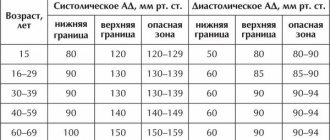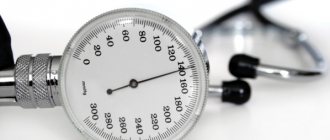Engine oil pressure is an indicator of engine health. For normal operation, constant lubrication of its elements is necessary. The oil system, the working fluid of which is engine oil, is responsible for the process of continuous lubrication of spare parts. The use of low-quality lubricant leads to various problems in the motor. In particular, to accelerated wear of moving elements. In extreme cases, the entire unit fails beyond repair. High or low pressure may also indicate poor quality of engine oil. Having noticed “jumps”, you should react immediately.
Causes of high and low engine oil pressure and how to fix problems
High blood pressure
The reason to suspect such a misfortune would be the appearance of leaks from under the gaskets on the engine. When connecting the pressure gauge, the fears are confirmed. Question: what is the reason and what should I do? The main cause of the problem is almost always a malfunction of the pressure reducing valve, caused by simple contamination or wear. To begin with (especially if getting to this structural element is not easy), it makes sense to flush the lubrication system. Since there are already quite serious malfunctions in the operation of the system, when choosing a flushing composition it is better not to be “embarrassed” and prefer enhanced versions. For example, Oilsystem Spulung High Performance Gasoline.
And in general, if you keep the lubrication system clean by regularly using flushes, the likelihood of encountering a problem with high pressure tends to zero.
Reduced oil pressure
We have already named the first one - insufficient level, but there may be others. The second exactly coincides with the reason for the first point, only the pressure reducing valve managed to “hang” on the dirt in the slightly open position, or its spring was mechanically damaged. Treated by replacing the valve or flushing. The part costs a penny, but it greatly affects the health of the engine. By the way, flushing often helps eliminate another cause of oil starvation - deposits on the oil receiver mesh. An example is shown in the image.
Insufficient viscosity of engine oil when the engine is fully warmed up
Most often, this reason can be diagnosed by the characteristic behavior of the oil pressure lamp - it blinks in response to the slightest decrease in idle speed of a fully warmed-up engine.
In such a situation, it is advisable to check whether anything was mixed up during the last oil change, and whether the type of lubricant poured into it is suitable for the engine. If the latter is not suitable, it makes sense to replace it.
The second thing that could happen is that the suitable oil has lost its viscosity due to overheating or fuel ingress (usually in this case you can smell a characteristic fuel smell from the oil filler neck). We will leave the analysis of solving the problems of fuel equipment outside the scope of this article and assume that we have solved it. What about oil? Change? The best option is to change it, but there is not always such an opportunity (temporary, financial, physical). Is it possible to delay this procedure? Can! And such a product that increases oil pressure as Visco-Stabil Viscosity Stabilizer will help us with this.
Also, the reason for the insufficient value may be increased wear of parts of the oil pump, main and connecting rod bearings of the crankshaft, camshaft bearings and turbine, but all of these aspects, unfortunately, require complex repairs to eliminate.
As you can see, oil pressure in a car engine is a parameter that greatly influences the durability and proper functioning of the “heart” and requires very careful attention. But not all problems with it are critical, and some can be solved without disassembling the main unit: by cleaning the oil system, replacing the oil fluid or viscosity stabilizer.
Source
Danger of incorrect pressure
All car manuals will say that the pressure should be normal. But it is not always specified how this parameter is measured, what it depends on and how to raise it if it has dropped, or how to reduce it if it has risen. And what does this norm even mean? Let's figure it out.
As you can see, there are a lot of questions. It is unlikely that I will be able to give a detailed description of literally each of them. That's why we need your help. If you have ever worked with engines like FE-E, 6G72, YaMZ 236, 238, or the same ZMZ 409, it would be a good idea to leave your comment.
As for what the correct pressure should be, I’ll say it simpler first. It shouldn't be high or low. Average Because:
Briefly about the design of the lubrication system
Continuing to draw parallels between the operation of the engine and the circulatory system of the human body, let’s consider what makes the oil circulate through the channels of the power unit, performing its assigned functions.
The role of the heart, which drives the life-giving fluid, in the engine is played by an oil pump. From it, lubricant is distributed through the “vessels”, which are represented by special channels in the car’s power plant, to all corners of the system.
Most modern passenger cars use a combined oil supply method. Under a certain pressure, the lubricating substance is pumped from the crankcase into the main line, bypassing the receiver and filter device.
The purified oil reaches all functionally significant parts and components of the engine, such as crankshaft bearings and camshaft bearings or piston pins. The slightest deviations in the normal operation of the system are regulated by special valves:
- reducing is designed to control pressure. Excessive excess of the standard value leads to valve activation. Through it, excess oil is discharged to the inlet;
- If the oil filter is clogged, the bypass valve is activated. His responsibilities include supplying unclean lubricant to the system.
A special sensor is placed on the cylinder block. Its functions include timely notification of the driver about an excessive drop in oil pressure in the lubrication system of the power unit.
Oil pressure alarm
On the instrument panel of any car there is an emergency oil pressure indicator, in other words, a light bulb. It usually looks like an oil can. Its function is to instantly inform the driver that the oil pressure has dropped to a critical level. The indicator is connected to the oil pressure sensor, which is located on the engine. If the oil pressure alarm goes off, you must immediately stop the engine. It can be restarted only after the fault has been eliminated.
Before the light comes on, it may flash periodically, which is also a sign of low oil pressure. It is better not to delay solving this problem, but to immediately diagnose the problem.
Checking the alarm
During normal engine operation, the warning light does not light up, so the question may arise: is it working? It is very easy to check its operation. When the ignition is turned on, before the engine starts, all indicators on the instrument panel light up in test mode. If the oil pressure light is on, it means the warning light is working.
The instrument panel is in test mode when the ignition is turned on - at this moment all the lights come on to check their operation
Possible problems
The most common problems encountered by motorists are failure of oil pump parts, filters (usually due to wear), loss of tightness of components, violation of adjustments or mechanical problems with pressure reducing valves. Malfunctions of the engine lubrication system are usually associated with two groups of problems.
- Problems that lead to a decrease in oil pressure. They can be the result of deformation, wear, damage to the oil pump, low oil level, clogged filter, failure of the oil sensor, or sticking of the pressure relief valve.
- Problems that lead to increased oil consumption. This is the result of failure of the gas distribution mechanism, wear of the pump gasket, clogging of the crankcase ventilation, damage to the crank mechanism, weakening of the oil filter (or an initial error in securing it).
To identify pressure indicators, warning lights are used on the vehicle’s instrument panel. Low oil pressure is a direct signal indicating that the vehicle cannot be driven and requires repair or maintenance. To determine oil consumption, modern cars with automatic equipment have a special indicator lamp on the instrument panel. To determine the problem in vehicles without such a lamp, a feeler gauge is traditionally used.
Wear and deformation
If diagnostics show that the parts are worn out, that is, they have served their service life, in most cases there is no point in trying to restore them. It needs to be changed. Gaskets, caps, and filter seals have a service life (indicated in the documentation for the parts), and if they are not replaced, the number of problems can only increase. For example, untimely replacement of the filter leads to a critical concentration of harmful impurities, which can lead to deformation of not only the filter itself, but also the housing. Deformation of the housing can be caused, for example, by wear on the outer surface of the pump bushings. By the way, about deformation. It can occur much earlier than wear itself. But to solve the problem, you will have to not only change the deformed part, but also eliminate the cause that led to this trouble.
For example, with mechanical deformation, the root of the problem is often in malfunctions of other components interacting with the SSD. In particular, deformation of parts of the lubrication system may be a response to the failure of silent blocks or failure of the internal combustion engine. However, it is a comprehensive diagnosis that is important here. You shouldn’t immediately “blame” the engine mounting or silent blocks. For example, in a situation where timing valve parts are deformed, the quality of the oil is often to blame.
Fault prevention
The most effective prevention of malfunctions is regular qualified maintenance:
- Systematic replacement of the oil filter.
- Systematic replacement of engine oil.
In this case, you need to clearly know how much engine oil the system requires, and take into account the volume of the engine lubrication system. An insufficient amount of oil creates a load on parts, increases dry friction, and accelerates wear. Excess oil - the risk of creating excess pressure and damaging the camshaft and crankshaft seals, “killing” the seals and breaking the tightness
Important! Along with replacing the oil pump, it is always important not to be lazy and replace the oil filter
An important element of prevention is the competent operation of the internal combustion engine.
It is especially important to start the engine correctly in frosty weather. At low temperatures, the viscosity of the oil thickens, and the path of the oil to the rubbing parts worsens.
Warming up the engine before starting in this situation is a necessary operation.
Timely maintenance and prevention means providing lubricants to all parts that come into contact with friction, protecting the internal combustion engine from overheating and combustion residues, damping vibrations and suppressing noise.
Engine oil pressure disappears or drops - causes and solutions
The oil pressure indicator may light up intermittently, blink, or stay on continuously. It may light up when the engine warms up, but go out after idling and starting to move. It is possible that the signal will come on when the crankshaft speed increases. In any of the options, it is necessary to look for the causes of the malfunction and ways to eliminate them. Some of them are as follows:
Oil leak. It is necessary to check the oil level and conduct an external inspection of the engine. It is recommended to inspect the connecting points of pipelines with oil system components and sealing elements. If there are leaks, it is necessary to tighten the fastening bolts or replace the sealing parts.
- The oil is very liquid. The reason may be the use of a lubricant that does not meet the manufacturer's requirements. When heated, the lubricant may lose its viscosity and leak out at the seal areas. Although, until the engine and lubricant are warmed up, the indicator will not light up. In this situation, it is recommended to replace the oil fluid in accordance with the manufacturer's requirements.
- Presence of liquid from the cooling system in the oil. Low oil pressure in a running engine can be the result of microcracks in the cylinder block or cylinder head, or holes in the cylinder block gasket. As a result of these defects, the liquid flows into the crankcase and mixes with the lubricant. During operation, the crankshaft and oil pump foam the oil solution, the foam enters the pipeline instead of oil. The consequence of the malfunction is expressed in the presence of thick white smoke from the exhaust pipe, a simultaneous decrease in the coolant level and an increase in the lubricant level. To eliminate the malfunction, it is necessary to repair the power plant.
- Fuel in the crankcase. There are a number of power plant malfunctions, as a result of which fuel enters the crankcase and mixes with the oil solution. This could be a drop in compression, low-quality and poorly flammable fuel, faulty injectors, and more. Fuel enters the cylinders, but is not completely burned. Oil scraper rings remove remaining fuel into the crankcase, where it mixes with lubricant. The quality of the oil deteriorates, it becomes more liquid and its pressure disappears. As a result of the malfunction, fuel consumption and lubrication levels increase, and thick black smoke comes out of the exhaust pipe. To eliminate the problem, it is necessary to reduce the crankshaft speed and return the engine to normal operation.
- Malfunction of the oil filter. When installing the filter, you must make sure that it has a shut-off valve or washer. Their absence will lead to the fact that after the power unit stops, the lubricant will drain into the crankcase. At the next start, it will take some time to pump oil into the filter, as a result of which the warning light will light up. After the motor stops, the cycle will repeat. To eliminate the problem, you need to install a new working filter.
- Oil filter dirty. Violation of operating conditions or failure to comply with maintenance schedules leads to clogging of the oil filter and failure of the pressure reducing or shut-off valves. To restore normal operation of the lubrication system, it is recommended to change the lubricant and oil filters.
- Pressure sensor faulty. If the sensor is electronic, it is necessary to check the reliability of the connection of the wires to the sensor and the serviceability of the sensor itself. If the device is mechanical, you need to unscrew it from the system and check for debris. If you reconnect the sensor and there is still no pressure, it is recommended to contact a service station.
- Wear of components and assemblies of the power plant. As a result of depletion and wear of the crankshaft, distribution and connecting rod-piston mechanisms, an increase in the places where lubricant leaks occurs, as a result of which the pressure in the lubrication system begins to drop. To eliminate this malfunction, it is possible to overhaul the power unit.
What does low oil pressure mean?
To properly lubricate, cool, and clean critical components such as crankshaft and camshaft bearings, pistons, and other moving parts, the lubrication system must have sufficient oil flow and pressure. Together they allow the components under the valve cover at the top of the engine to be lubricated.
To do this, the oil pump must push oil through the narrow clearances under the bearings. It is these narrow passages that create pressure in the system because they limit the flow rate of the lubricant. The faster the engine runs, the higher the oil flow rate and the higher the pressure.
However, too much pressure can damage engine components. A relief valve next to the oil pump opens when the pressure reaches a set point, usually between 45 and 75 psi, allowing additional oil to drain back into the sump.
However, when the lubrication system cannot maintain proper oil flow or when pressure must not drop, engine components will starve for much-needed oil.
Using oil with the wrong viscosity for the application will result in system pressure loss.
Prerequisites for high blood pressure
As in the human body, any deviations from standard indicators in the power unit are caused by very specific reasons. The following factors usually lead to excess pressure in the oil system:
One of the most common reasons is the use of a lubricant of the wrong viscosity. Oil that is too thick has great difficulty circulating through the channels. This reason becomes especially relevant in winter if the engine continues to use summer oil products; The malfunction in question can be explained by obstruction of oil pipes and filters. This problem is caused by clogging of these parts with oxidation products and other foreign deposits; An increase in pressure in the system is caused by a violation of the free circulation of lubricant, which occurs due to defects in the pressure reducing valve. The damaged part does not perform its intended function. Excessive amounts of petroleum product are not discharged to the inlet, remaining in the system; Violation of the normal operation of the bypass valve contributes to the formation of excess pressure. Through it, unrefined oil should be supplied to the power unit when the filter device is clogged; sometimes exceeding the standard value occurs due to excessive pressure in the crankcase. Typically, increased gas breakthrough leads to such consequences.
In addition, crankcase pressure can reach unacceptably high levels due to a defective exhaust valve; and last on the list, but not least, is equipping the lubrication system with inappropriate parts. Each element must meet certain parameters
Just as during transplantation, a foreign body is rejected by the human body, so when replacing spare parts, the inappropriate fragment quickly fails.
As you can see, there are not so many reasons that influence an excessive increase in oil pressure in the power unit. A sufficiently experienced driver is quite capable of preventing their occurrence.
Result of checking
If the pressure gauge shows normal oil pressure in the power plant, but the control indicator continues to glow treacherously after connection, then the reason for its activity lies in its malfunction. Replace the sensor with a new one and enjoy your trips further.
High blood pressure
Causes
If you are lucky enough to encounter the problem of high blood pressure, then you need to figure out what caused it. This disease occurs for the following reasons:
- Using oil that is not suitable for the engine technical parameters. If you ignored the manufacturer's instructions and poured the first liquid with an excessively high viscosity into the engine, the problem will not be long in coming. It becomes especially relevant when using summer lubricants in winter.
- Obstruction of oil channels and filters. Oil pressure is affected by clogging of the lubrication system paths and filter elements of the structure. A large amount of soot, soot and metal shavings clog the channels through which the oil circulates. As a result, the same amount of liquid continues to move through the “cut down” system, increasing pressure inside it.
- Reducing valve malfunction. The valve does not provide the required dosage of fuel and lubricants and leaves in the system an excess amount of oil for the cycle. As a result, the free space required for effective functioning is reduced and the pressure increases.
- Malfunction of the bypass valve. Its main task is to supply working fluid from the pump to the channels of the lubrication system, bypassing the filter element if it is clogged. If there are malfunctions in its operation and it begins to leak oil while the filter is functioning, the pressure in the power plant increases.
- Exhaust valve defective. Exhaust gases must leave the structure and not accumulate in it. The pressure in the engine lubrication system may increase due to the failure of the exhaust valve: the gas-air mixture will fill the crankcase and increase the pressure of the oil lubrication.
Causes of increased pressure in the crankcase
Posted by a3306_aka_BigAlex
Why didn’t you immediately put the gasket on the sealant?
When I first took everything apart, everything was covered in oil. I didn’t even think about the gasket then. I wiped everything down, replaced only the oil seal and started the engine to have a look. And the next day I saw that it was leaking through the gasket (maybe the old oil seal didn’t leak at all). Only after that I began to remove the crankcase and change the gaskets. Installed the gaskets according to the requirements outlined in the book. I applied sealant only to the ends of the gaskets; the pictures show everything by centimeters (in the book). After that I started it again and watched it. Everything was OK. And a month later again...
Posted by a3306_aka_BigAlex
I circled it in your picture
Pay attention. Do you see the shadow immediately under the thread (pointed at it with an arrow)? It's on the next part! (counterweight on the crankshaft, crankcase wall, etc.) If the hole were blind, it wouldn’t exist! And the bottom of each hole would be conical, as the drill would leave it
Or, as a last resort, flat (if processed with a countersink), but with concentric circles (small, small marks). But this is not there! You can feel it with a wire. Conclusion? The hole is through! But! Cold oil cannot flow through the threads. But hot - easily. And since the shaft and flywheel are spinning, everything will be thrown to the sides. Look at the flywheel. If it is not dry, and even on both sides, then so be it.
Hmmm... Judging by this photo, yes, it’s possible. But maybe this is still a shadow from the carving (nonsense, however). I found another photo where drill marks are visible in each hole in the center. Now I began to doubt the “tightness” of the 50/50 holes. But again, 2.5 years ago I bolted these same bolts “dry” and now during disassembly they were dry and the holes were dry. As they say, until you understand it, you won’t understand it! )))
Posted by a3306_aka_BigAlex
By the way, have you measured the compression? Judging by what you indicated, you have a lot of breather... In general, something like this: 1. Multiply the working volume of your engine (in liters) by 10 - you will get a certain value, which is the crankcase gas flow rate in liters per minute for your engine. This (and everything below) is considered normal. 2. Anything above is no longer normal. 3. Do the same thing, just multiply not by 10, but by 15. If the flow rate per minute reaches this figure, then this is the limit! Look for money for repairs, and the sooner the better.
What you indicated is a little more than 11 liters per minute. Not so much, but it’s better to have less... Reasons? This is the CPG. Possibly with Trouble cylinders. Or with rings. Or the rings have become coked, for example, the oil scraper rings (especially if the breather is weak, and the oil consumption is high and there are no leaks) or the compression rings too (but then the breather will be pretty bad).
By the way, what kind of oil are you using? Maybe you have a lot of oil sloshing around in the pan, which will also lead to oil consumption! Thirty lei! At the very least - forty!
I’m not catching up or I’ve forgotten how to count. We multiply the volume of 2.8 by 15 and get a certain number 42. And my gas pressure is 11.25 l/min. 11.25 2.47 Is everything really bad?
Or I wrote nonsense. Oil Manool mineral water 10w40. I haven't checked the compression yet. The artisan I always turn to if I can’t do it myself, I’m busy right now. I measured it a year ago, maybe a little earlier. I don't remember the exact numbers. 3 cylinders were something like 28 plus or minus, and one cylinder less was something like 26. Hmmm, there’s something to think about. In principle, I’m mentally ready for capital as summer approaches. But I have no confidence in our service stations. If I knew for sure that after the capital investment everything would be OK, I wouldn’t regret the $. And if you spend a lot of money, then you will have to worry about running to the service station with problems.
The operation of any modern vehicle can be completely identified with the vital activity of the human body. Each mechanism of this rather complex technological device is assigned certain functions.
Oil plays the role of the life-giving fluid of the human circulatory system in a car. Without it, the power unit will not be able to perform its duties. In the absence of lubrication, the moving parts of the motor will instantly fail, destroyed by the force of friction.
Any sane person who cares about their health should monitor fluctuations in blood pressure. Like him, an attentive owner, striving to keep the car in working condition for as long as possible, carefully monitors similar indicators in the lubrication system of the power plant.
The pressure in the lubrication system can be either too low or too high. Is it possible to foresee the reasons causing such a malfunction of the power unit? If deviations are detected, is it worth urgently looking for the nearest workshop or is it better to do it yourself and fix the problem yourself? Let's try to figure it out!
Further diagnostic tests
Some common problems associated with low and high oil pressure are discussed here. As you might expect, knowing the exact cause of the problem will help you make better repair decisions and avoid unnecessary repair costs.
While it's not as common as the reasons listed above, don't forget that a failed oil pump can also compromise system pressure. A faulty pump may leak internally, or its relief valve may become clogged or weak. If necessary, you can install a new or refurbished one.
If the oil pump in your car fails, make sure that the problem is only in the pump itself. A worn pump is rare and may indicate, especially on high mileage engines, also worn engine bearings.
Sometimes more than one test, including a lubricant flow test, may be required to determine the cause of a lubrication system problem.
Some car owners seem to have found a practical way to deal with a clogged oil pump. Watch the video below for tips on how to clean this unit without removing the oil pan. These tips can help you quite a lot.
High oil pressure in car
Oil is moved into the engine using an oil pump, which is located in the engine sump. The pump takes oil and forces it through various oil passages, where it lubricates the engine's vital internal components. The oil then flows back into the oil pan, where it is picked up again by the pump. A special pressure sensor is installed to monitor oil pressure. This device transmits information to either a warning lamp or the instrument panel, depending on the equipment of your vehicle.
Cold weather
Oil viscosity and thickness increase with decreasing temperature. Too thick oil causes the oil pump to exceed its rated load. When working in the cold season, it is recommended to use rarer oils. It is considered normal when the pressure gauge shows pressure above normal on a cold engine. But if the pressure does not return to normal when the engine is warm, the oil is too thick.
Excessive oil
Never start the engine with the oil level above about the dipstick. Too much oil in the system places excessive stress on the oil pump and can lead to high pressure. Always check the oil level when the engine is cold. After the engine is turned off, you must wait until the oil drains back into the sump.
Clogged oil filter
The oil filter has many small holes through which oil passes after being drawn from the pan. These filters have an internal blockage bypass system that allows oil to circulate even if they are clogged. If the filter is clogged and oil is directed through the filter bypass system, this increases oil pressure.
Thickened oil
In some cases, oil viscosity may increase over time. If fuel injectors are overfilled, soot residue increases. This soot gets into the oil, making it thick, thereby increasing the pressure. Leaving the engine idling for long periods of time can also produce excessive amounts of soot.
Oil channel clogged
If the oil passages are clogged, they cause the oil pump to work harder. Oil passage openings become smaller due to accumulated deposits. As a result, oil pressure increases.
Shell auto repair center specialists recommend using SHELL synthetic oil, proven over the years. By calling our +7 office you can find out and choose the right oil for your car!
Source
Checking the pressure in the power plant
Each car is equipped with an oil pressure warning lamp, which is activated when the usual “oil circulation” is disrupted. Moreover, the indicator can be constantly on or blink at idle. In any case, the problem should not be ignored.
When there is no built-in digital meter, a pressure gauge must be used to diagnose the problem.
You can check the oil pressure in the engine according to the following scheme:
- We “warm up” the car to operating temperature - not lower than 90 degrees Celsius.
- Turn off the engine and open the hood.
- We disconnect the emergency oil pressure sensor and install a pressure gauge in its place.
- We check the oil level with a special dipstick and, if necessary, add engine lubricant to the required level.
- Let's start the engine.
- We measure the pressure at idle, then at high speeds.
To more accurately diagnose the problem, you can measure the device readings two or three times, and then calculate the average value.
After disconnecting the control sensor, some of the filled oil may leak out, which is why you need to measure its level before restarting the car.
Ways to combat excess pressure in the oil system
Each disease manifests itself with certain symptoms. In accordance with them, a special method of treating the disease is being developed.
Methods for dealing with high oil pressure in a power plant are selected based on the reasons for its occurrence:
- if the viscosity is inappropriate, a lubricant change will be required, taking into account the operating conditions of the unit, including temperature conditions;
- Elimination of blockages in oil-conducting channels and other elements of the system is carried out using special means available on the modern market in huge quantities. Lubricant filters also need to be cleaned or replaced periodically;
- Regular technical inspections contribute to the timely detection of faults in the system valves. Unsuitable or damaged parts must be replaced immediately. Moreover, each element must be selected individually, taking into account the design features of a particular power unit.
As you can see, there is nothing complicated in preventing excess pressure of motor lubrication in the engine oil system. Even an inexperienced car enthusiast can handle it on his own. And if such a situation arises, perform fairly simple manipulations with your own hands to eliminate the problem, such as replacing an oily substance or parts unsuitable for normal use.
Car won't start due to low oil pressure
Some vehicle models are equipped with a low oil pressure safety circuit.
The circuit connects to the car's computer, and the computer turns off the ignition system when too much oil pressure is lost.
This prevents serious mechanical damage to the engine.
If necessary, check your vehicle's repair manual to see if your model has this switch installed and, if necessary, check the oil system pressure using the following procedure.
The oil pressure switch or sending unit is usually located near the oil filter.
Warning!
When checking pressure using a pressure gauge, wear safety glasses to prevent eye injury from hot lubricant.
What should the engine oil pressure be?
There is no uniform standard for engine oil pressure, and the reason is simple: the design of motor systems from different car manufacturers has some differences.
But even here there is one general rule: the oil pressure at idle speed on the engine cannot be higher than in load mode.
The fact is that the faster the system elements rotate, the more lubrication they require.
To understand what the indicator we are interested in should be, it is necessary to imagine the principle of its measurement.
Modern cars are equipped with special sensors - they monitor the condition of the oil in the system.
Unfortunately, they are not accurate in all cases, but a triggered sensor can both save money on repairs and save lives. And if repairs are still required, it will cost a lot.
The operating manual for the vehicle indicates the main technical characteristics and operating modes of the lubricant. You can also usually find brands of fluids that are best suited for a particular engine. By the way, manufacturers offer branded oil under the brand of automakers.
There are two normal states of engine oil pressure: - at idle, that is, the engine is idling at low speeds, so it only needs about 2 bar or 0.2 MPa; - at high speeds, here the figure depends on the specific vehicle, but for for passenger cars it is in the range of 4–7 bar.
You can find indicators that are considered normal in the repair and operation manual for your car.
So, for the famous Russian car “Lada Priora” at idle the norm is 196.2 kPa, that is, about 2 bar, and at 5,400 rpm the norm is 4.5–6.5 bar. This level is considered the maximum for the car.
Manufacturers of American brands usually write normal pressure per 1,000 rpm. At 1,000 rpm the average is 10 psi (or 67 kPa).
For example, at 2,000 rpm the norm is 1.3 bar, and at 5,000 rpm the figure increases to 3.4 bar.
But when assessing these indicators, we should not forget about the difference between domestic cars and foreign cars, as well as the differences in operating conditions.
The level of normal oil pressure in the engine is influenced by many factors:
- engine displacement;
- number of cylinders;
- number of valves per cylinder (2–4) in the timing system;
- volume of oil poured at a time;
- turbocharged internal combustion engine or naturally aspirated;
- gasoline or diesel engine;
- in-line, V (W) shaped, opposed arrangement of cylinders.
For example, for a VAZ-2106, the minimum oil pressure at engine idle speed is 0.2 bar - it can be tracked using the arrow on the panel. If the level is insufficient, the red indicator on the panel lights up.
On older models it looks like a red lamp, on new ones it is a watering can icon. For a VAZ-2106, the oil pressure on a warm engine at speeds up to 4,500 per minute should be about 4-5 bar.
In other words, the pressure increases in direct proportion to the increase in speed.
For this 2.2 liter unit, the norm is an oil pressure in a diesel engine of 0.3 bar at idle.
In the area of the green scale, this figure rises to 3–3.5; if the value is too low, you should make sure that the car’s lubrication system is working properly.
If we consider ZMZ motors, the situation here is not much different. For the 405 engine, 0.4 bar at idle and 4 at high speeds (2 or more) are considered normal. Previously, all the necessary data could be obtained thanks to the arrow indicator, but now, after the release of GAZelle Business, they are displayed by the on-board computer on the dashboard, and with an accuracy of hundredths.
In the Chevrolet Lacetti 1.4 engine, the minimum DM level is 0.6 bar at idle, while at 3,000–3,5000 the oil pressure on a hot engine rises to 3 bar.
Today, the most productive pumps are equipped with VAZ models, namely the Lada Priora and VAZ 2110 with a 16-valve engine. Therefore, at idle the DM does not rise above 1 bar, and at 5,000 the needle reaches 6–6.5.
In the case of the Renault Logan, everything is different: for engines with an 8-valve timing belt, the normal value is 0.3 bar at idle. Whereas for 16-valve engines this level is twice as high.
An increase or decrease in DM relative to factory standards has a negative impact on engine performance.
Too high a level breaks the tightness of the connections, which causes leaks of seals and gaskets, and squeezing out of the seals.
What affects normal blood pressure levels?
The main factor on which this indicator depends for a particular car will be the engine displacement and the number of cylinders. In addition, the pressure level depends on:
- ICE type – naturally aspirated or turbocharged;
- type of fuel - gasoline or diesel;
- amount of oil poured;
- gas distribution mechanism (GRM) systems;
- cylinder arrangement – opposed, in-line, V-shaped.
What the normal oil pressure should be when the engine is operating in various modes is indicated in the repair and service instructions for a specific car brand. However, it should be borne in mind that the figures given there will only be correct if the engine and its components, such as filters and the oil pump, are in good condition. It is also important that the engine oil meets the manufacturer’s tolerances, and its viscosity meets the standards established for a given engine model and weather conditions.
Malfunction: the crankcase ventilation system is clogged
Many car owners have a vague idea about the crankcase ventilation system of their car. Since for a long time, while the car has low mileage, it works unnoticed, without giving away its existence. After years and (or) hundreds of thousands of miles, the ventilation system gradually becomes clogged, showing the first signs of its malfunction.
Signs of malfunction: the crankcase ventilation system is clogged
Drives engine oil out of the engine under seals and gaskets
Since the ventilation system is responsible for the timely and effective removal of gases from the engine crankcase into its intake tract, the slightest narrowing of its channels due to the appearance of deposits in them leads to an increase in pressure in the crankcase and in the engine itself. Increased pressure causes engine oil to leak under the crankshaft and camshaft seals, pan gasket, valve cover gasket, and oil filler plug. Replacing oil seals and gaskets in such a situation does not solve the problem of oil leakage.
Engine air filter housing oil
(for carburetor engines)
Due to the reason described above for the increased pressure in the engine crankcase, the engine oil contained in it begins to be actively released along with gases under the valve cover and further into the air filter housing. Clogging the filter element and carburetor jets.
Increased engine oil consumption
Since engine oil begins to be actively released into the engine intake tract and burns out in the combustion chambers, its consumption increases accordingly. At first, almost unnoticeable, it gradually grows as the ventilation system becomes clogged.
Oiling of spark plug electrodes
Due to engine oil entering the engine intake tract and further into the combustion chambers, the spark plug electrodes become oiled. The spark plugs begin to work intermittently, the engine idles, there are dips and jerks in movement, and blue smoke from the muffler.
Causes of the malfunction: the crankcase ventilation system of the car engine is clogged
High car mileage
Sooner or later, the engine crankcase ventilation system ceases to effectively cope with its responsibilities since it constantly has to deal with crankcase gases carrying particles of oil, soot, etc. Over time, all this clogs the system’s oil separator and settles in the form of soot deposits on the walls its hoses and tubes.
Use of low-quality oils
The process of clogging of the crankcase ventilation system can be accelerated by constant operation of the car engine with low-quality and (or) engine oil unsuitable for the given engine. In this case, the amount of soot deposits increases significantly.
Wear of the engine piston group
A worn-out piston group of a car engine (rings, pistons, cylinders) allows a large volume of gases from the combustion chambers to break into the crankcase, increasing the pressure in it and contributing to the onset of negative consequences.
What to do if there are signs of clogging of the crankcase ventilation system?
Change the engine oil to an appropriate and high-quality one.
Check the compression in the engine cylinders to determine the degree of wear of its piston group.
Notes and additions
On engines in which the design of the ventilation system allows, there is a practice of eliminating the negative consequences of clogging of the ventilation system and piston wear, which consists of leading the main hose of the system under the engine. In this case, crankcase gases are released into the atmosphere. Since they are poisonous, the environment suffers.
Why is an engine crankcase ventilation system needed? The system is designed to remove gases from the engine crankcase into its intake manifold, which prevents an increase in their pressure and, as a result, oil leakage under the oil seals and seals. In addition, afterburning of harmful crankcase gases leads to a decrease in exhaust toxicity.
Closed crankcase ventilation system. With forced removal of gases (due to vacuum in the intake manifold). Gases are sampled through an oil separator, which cleans them of engine oil particles. Gases are removed through two circuits (main and idle).
Example: design of the crankcase ventilation system of a car engine.
1. Engine crankcase.
3. Hose from the breather to the valve cover pipe.
4. Oil separator under the valve cover.
5. A thin hose from the valve cover to the fitting with the throttle body nozzle.
6. Fitting with a jet on the throttle valve block.
7. Thick hose from the valve cover to the inlet pipe.
Source
Purpose of motor oil
Some ignorant car enthusiasts mistakenly believe that lubrication is necessary for the engine only to prevent premature wear of rubbing parts. Of course, the formation of a special protective film that reliably envelops the moving elements of the power unit is the main purpose of motor oil. However, its functions are much more advanced:
- During engine operation, excess heat is generated in the cylinders. Motor lubricant does an excellent job of removing it;
- with the help of special additives, the oil helps cleanse the power unit from various deposits;
- The combustion process of fuel is usually accompanied by the formation of excessive amounts of oxides. A lubricating substance is used to neutralize them;
- Also, the purpose of motor oil is to prevent corrosion on the functional elements of the engine.
Oil plays a fairly significant role in ensuring the normal operation of the power unit. Just as a person cannot exist without sufficient blood, a motor cannot function without lubrication.
Therefore, it is so important to pay due attention to timely oil changes, as well as monitor its pressure indicators
How dangerous is excess engine oil pressure?
Every more or less experienced driver always scrupulously notes deviations from the standard performance indicators of the engine, laid down by the manufacturer during the manufacturing process of the car. This is akin to how a person controls his health. Any malfunction is identical to feeling unwell. What “diseases” of the power unit can be a sad consequence of high engine oil pressure in the engine?
It should be noted that the malfunction in question is not as dangerous for the normal operation of the car as an insufficient amount of lubricant.
The most predictable consequences are:
- First of all, excess oil pressure negatively affects the integrity of the sealing surfaces. The seals, unable to withstand excessive load, collapse, releasing excess oil from the system. Increased lubricant consumption;
- As oil pressure increases, its quantity increases. Excess oil is released through the crankcase ventilation system. This also affects the increase in consumption;
- engine malfunctions occur as a result of lubricant getting on the surface of the idle speed regulator;
- Damage to the air flow sensor, even complete failure, is possible from contact with the oily substance of the measuring element of this device. A similar problem is typical for power units with a fuel injection system;
- The increased level of lubrication generated by excess pressure leads to foaming of the oil by the crankshaft counterweights. An oil emulsion saturated with gases harms the normal functioning of the engine. Knocking may occur in valve actuators and hydraulic compensators;
- The most unpleasant consequence of excess pressure in the lubrication system of a power plant is the destruction of the piston skirts.
Of course, the listed factors are not critical for normal operation of the motor. However, dumping excess lubricant causes a decrease in the level of oil product, and an insufficient amount of oil in the system is fraught with much more tangible troubles.
The installed oil filter is of poor quality or clogged
To avoid oil starvation, there should always be some amount of engine oil in the oil filter when starting the engine. The lubricating fluid is held there when the power unit is turned off thanks to a lock washer or check valve.
If the filter is of poor quality, then the above elements may not cope with their task or may be absent altogether. In this situation, the oil returns to the oil pan. This leads to the fact that when pressure builds up, the switched on engine experiences oil starvation, which causes increased wear of its parts.
A clogged oil filter puts additional stress on the oil pump. In addition, it causes a decrease in pressure in the system.
Causes of a sharp drop in oil pressure
Usually this figure decreases gradually. A sharp decrease in oil pressure usually has the following reasons.
The pan is broken.
This often happens when driving over rough terrain or on roads with potholes and potholes. If the pan is punctured, the oil quickly flows out and the lubrication system stops working, which is immediately reported by the emergency indicator.
The pump has failed.
This phenomenon occurs infrequently, but drivers report that it does occur. Modern cars will immediately report a problem using indicators, but on older models you have to listen to how the engine is working.
Loss of oil through loose connections.
If the engine is poorly assembled or low-quality spare parts are installed in it, there are gaps between the individual elements. It is through them that the engine oil flows out. The pressure drops significantly, although not as rapidly as when the pan is punctured. The leak is easy to notice after the car has been parked: oil stains are visible in the place where it has been parked for some time.











